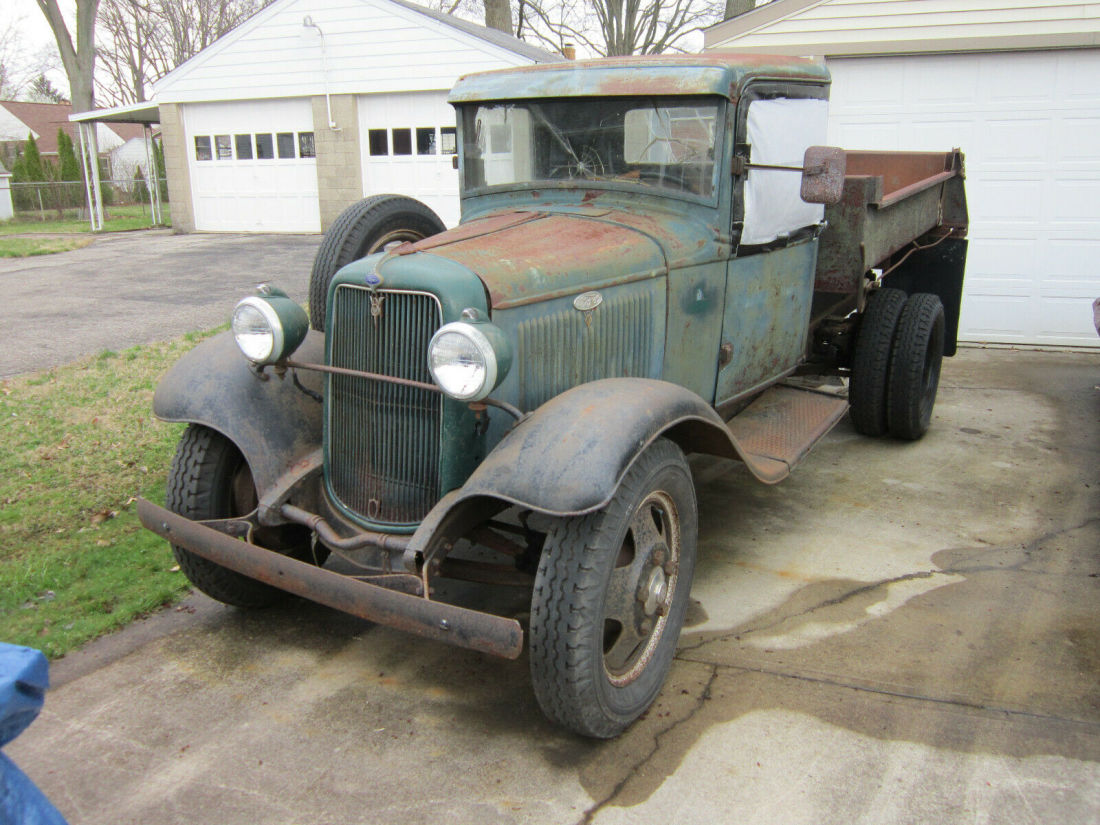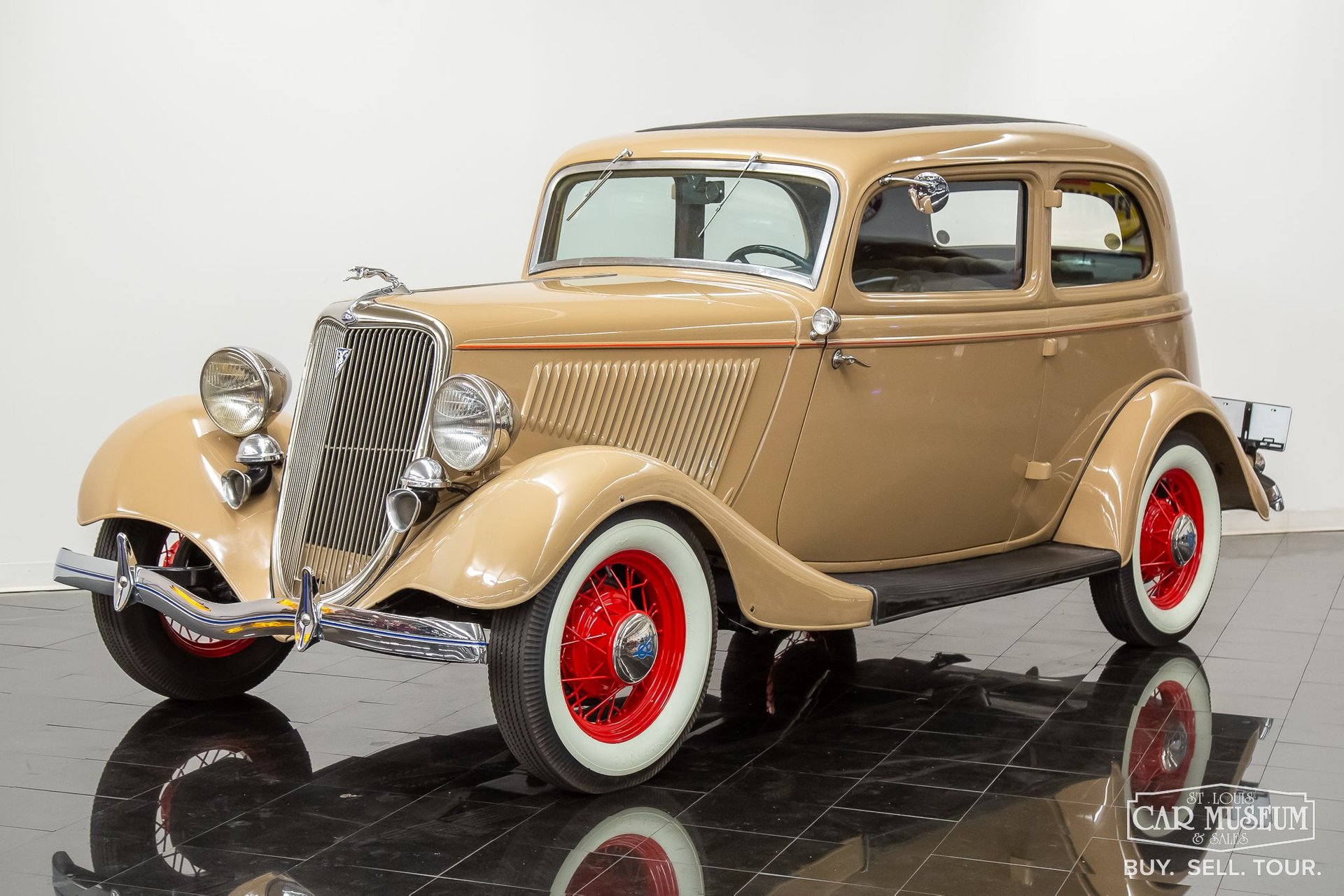1934 Ford Trucks For Sale: A Comprehensive Buyer’s Guide pickup.truckstrend.com
Introduction: Unearthing a Piece of Automotive History
In the annals of automotive history, few vehicles command the enduring affection and historical significance of the 1934 Ford Truck. Emerging from the depths of the Great Depression, these robust workhorses represented a beacon of innovation and reliability, primarily due to their groundbreaking Flathead V8 engine – a marvel of engineering for its time. More than just a utility vehicle, the ’34 Ford truck embodies a distinct era of American ingenuity, design resilience, and the burgeoning power of the internal combustion engine. Today, finding a 1934 Ford Truck for sale is not merely about acquiring a classic vehicle; it’s about investing in a tangible piece of the past, a versatile platform for restoration or customization, and a symbol of automotive heritage that continues to captivate collectors, restorers, and hot-rodders worldwide. This comprehensive guide will navigate the exciting journey of exploring, evaluating, and ultimately acquiring your own piece of 1934 Ford history.
1934 Ford Trucks For Sale: A Comprehensive Buyer’s Guide
The Enduring Appeal of the 1934 Ford Truck
The allure of the 1934 Ford Truck is multifaceted, drawing enthusiasts from various corners of the automotive world.
- Historical Significance: The ’34 Ford, alongside its passenger car counterpart, cemented Ford’s commitment to the V8 engine, making powerful performance accessible to the masses. This era marked a pivotal shift in automotive engineering and marketing.
- Iconic Design: The ’34 trucks boast a distinctive Art Deco-influenced design, characterized by their elegant grille, sweeping fenders, and sturdy, purposeful stance. They strike a perfect balance between utilitarian function and classic aesthetic appeal, making them instantly recognizable and highly desirable.
- Mechanical Durability: Built to endure the rigors of farm work, construction, and delivery during a challenging economic period, these trucks were engineered for longevity. The Flathead V8, while requiring specific maintenance, is renowned for its robust construction and distinctive exhaust note.
- Versatility as a Platform: From meticulous, historically accurate restorations to radical hot rod transformations, the 1934 Ford truck chassis and body provide an incredibly versatile foundation. Its popularity among customizers ensures a thriving aftermarket for parts and modifications.

Types and Configurations of 1934 Ford Trucks
While often generalized, the 1934 Ford truck lineup offered several configurations, primarily distinguished by their chassis and body styles. Understanding these variations is crucial when assessing a vehicle for sale.
- Model 40 (Passenger Car Chassis-Based): Many early pickup trucks shared components and chassis designs with Ford’s passenger car line. The 1934 Model 40 trucks often utilized a similar frame to the passenger cars, making them somewhat lighter and sometimes more prone to hot rod conversions.
- Model 46 (Commercial Chassis): Ford also produced heavier-duty commercial chassis (often designated Model 46) designed for more demanding applications. These trucks featured stronger frames and sometimes different suspension components to handle heavier loads.
- Common Body Styles:
- Pickup: The most iconic and sought-after, featuring an open bed for hauling. These are the most common "for sale" examples.
- Stake Bed: Larger, flatbed trucks with removable stakes around the perimeter, used for bulkier loads.
- Panel Van: Enclosed body with no rear windows, used for deliveries and commercial services. Less common to find in good condition.
- Chassis-Cab: Just the cab and chassis, intended for custom bodies like dump trucks, fire trucks, or specialized commercial vehicles.

- Original vs. Modified: It’s important to distinguish between trucks that retain their original Flathead V8, manual transmission, and stock suspension, and those that have been "restomodded" or fully hot-rodded with modern engines (like small-block Chevys or Ford 302s), automatic transmissions, and updated suspension/brakes. Both have their appeal, but cater to different buyer needs and budgets.
Where to Find a 1934 Ford Truck For Sale
Locating a 1934 Ford truck can be an exciting treasure hunt. Here are the most common avenues:
- Online Marketplaces:
- Specialized Classic Car Websites: Sites like Hemmings Motor News, ClassicCars.com, OldRide.com, and Bring a Trailer often list classic trucks.
- General Auction Sites: eBay Motors can occasionally yield good finds, but buyer beware regarding descriptions and photos.
- Social Media Groups & Forums: Dedicated Facebook groups for Flathead Fords, vintage trucks, or hot rods can be excellent resources for leads and community insights.
- Auctions: Major automotive auctions (e.g., Mecum Auctions, Barrett-Jackson) frequently feature high-quality restored or custom 1934 Ford trucks. Local estate or farm auctions can sometimes uncover "barn finds."
- Specialized Dealers & Brokers: Many classic car dealerships specialize in vintage vehicles and often have a rotating inventory of classic trucks. Brokers can help source specific models.
- Word of Mouth & Car Shows: Attending classic car shows, swap meets, and vintage truck gatherings is not only enjoyable but also a prime networking opportunity. Many sales happen privately within the enthusiast community.
Key Considerations Before Buying
Purchasing a vintage vehicle, especially one nearly 90 years old, requires careful consideration.
- Condition Categories:
- Project/Parts Truck: Typically non-running, significant rust, missing components. Suitable for full restorations or as a donor vehicle.
- Driver Quality: Runs and drives, but may have cosmetic flaws, minor mechanical issues, or older restoration. Good for those who want to use it immediately and improve it over time.
- Nicely Restored/Modified: Well-executed restoration or a tasteful custom build. Generally reliable for driving, with good aesthetics.
- Show Quality/Concours: Meticulously restored to original specifications or a top-tier custom build. Often commands the highest prices.
- Rust: This is the primary enemy of vintage steel. Pay close attention to:
- Cab corners and lower cab sections
- Floorboards (both cab and bed)
- Fenders and running boards
- Frame rails (especially where they might have sat in water)
- Look for patches, bondo, or signs of poorly executed repairs.
- Mechanical Condition:
- Engine: Is it the original Flathead V8, or has it been swapped? If original, ask about rebuild history, oil pressure, and any knocking/ticking. If swapped, ensure the conversion was done professionally.
- Transmission: Original 3-speed manual or an upgraded automatic? Check for smooth shifting and unusual noises.
- Brakes & Suspension: Original mechanical brakes or hydraulic conversion? Check for leaks, play, and wear. Steering box play is common.
- Originality vs. Modification: Decide what you truly want. An original truck will have a different driving experience and maintenance needs than a modern-powered hot rod. Both have their pros and cons regarding parts availability, cost, and practicality.
- Documentation: A clear, transferable title is paramount. Seek out any historical documentation, build sheets, or restoration records. This adds value and peace of mind.
- Parts Availability: For a popular classic like the ’34 Ford, parts availability is generally good, especially for mechanical components and reproduction body panels. However, specific trim pieces or very rare options can be challenging to source.
The Buying Process: Tips and Challenges
Once you’ve identified a potential candidate, a structured approach is key.
- Set a Realistic Budget: Beyond the purchase price, factor in transportation, immediate repairs, insurance, and potential restoration costs.
- Thorough Inspection: If possible, inspect the truck in person. Bring a knowledgeable friend or, better yet, hire a pre-purchase inspector specializing in vintage vehicles. Look underneath, check panel gaps, inspect welds, and test all functions.
- Test Drive (if applicable): If the truck is a driver, take it for a spin. Pay attention to steering, braking, engine sounds, and transmission behavior. Remember, a 1934 truck will not drive like a modern vehicle.
- Negotiation: Be prepared to negotiate. Research comparable sales to understand the market value for different conditions.
- Transportation: Plan how you will transport the truck, especially if it’s a non-runner. Enclosed transport is recommended for restored vehicles.
- Common Pitfalls:
- Hidden Rust: What looks good on the surface might hide significant corrosion underneath.
- Title Issues: Always verify the VIN and ensure the title is clear and in the seller’s name.
- Incomplete Projects: Unfinished projects can sometimes cost more to complete than buying a finished one, especially if previous work was substandard.
- "Hot Rod" Discrepancies: Ensure the modifications meet your local registration and safety requirements.
Restoration and Ownership: What to Expect
Owning a 1934 Ford truck is a commitment, but a rewarding one.
- Costs: Restoration can be expensive, often exceeding the initial purchase price. Budget for paint, bodywork, engine rebuilds, upholstery, chrome plating, and electrical work. Parts, while available, can add up.
- Finding Skilled Labor: Specialized shops with experience in vintage Fords or Flathead V8s are invaluable. Poorly executed work can devalue the truck and lead to future headaches.
- Maintenance: Even a fully restored truck requires ongoing maintenance. The Flathead V8 needs regular oil changes, valve adjustments, and attention to cooling.
- Driving Experience: Expect a raw, engaging, and often noisy experience. No power steering, power brakes, or climate control. It’s a connection to driving from a bygone era.
- Insurance & Registration: Many companies offer specialized classic car insurance, which often has lower premiums and agreed-upon value policies. Check your state’s requirements for registering historic vehicles.
1934 Ford Trucks For Sale: Estimated Price Guide
Prices for 1934 Ford trucks vary significantly based on condition, originality, and modifications. This table provides a general range.
| Condition Category | Description | Estimated Price Range (USD) |
|---|---|---|
| Project/Parts Truck | Non-running, significant rust, incomplete, missing major components. Requires full restoration or suitable for parts. | $5,000 – $15,000 |
| Driver Quality | Runs and drives, generally solid but with cosmetic flaws (old paint, minor dents, worn interior). May have some mechanical issues needing attention. Usable as is, but benefits from ongoing work. | $18,000 – $35,000 |
| Nicely Restored/Modified | Professional or high-quality amateur restoration, or a well-executed custom/hot rod build. Good paint, solid interior, reliable mechanicals. Suitable for regular enjoyment and local shows. | $38,000 – $65,000 |
| Show Quality/Concours | Meticulously restored to original specifications with exceptional detail, or a top-tier custom build with flawless execution. Often features rare options or premium components. Commands the highest prices. | $70,000 – $120,000+ |
Note: These are estimated ranges and can fluctuate based on specific model (pickup vs. panel), rarity, provenance, and market demand.
Frequently Asked Questions (FAQ)
Q1: Are parts hard to find for a 1934 Ford truck?
A1: Generally, no. Due to their popularity, many reproduction parts are available for body panels, trim, and mechanical components. Specialized Flathead V8 parts and original accessories may require more searching.
Q2: Is the Flathead V8 engine reliable?
A2: When properly maintained and rebuilt, the Flathead V8 is a robust and reliable engine. However, they are sensitive to overheating and require regular oil changes and valve adjustments. Modern upgrades like 12V electrical systems and improved cooling can enhance reliability.
Q3: Can I drive a 1934 Ford truck daily?
A3: While technically possible, it’s generally not recommended. They lack modern safety features (seatbelts, airbags), braking performance is limited, and the driving experience is significantly different. Most owners reserve them for weekend cruises, shows, and special occasions. Hot-rodded versions with modern drivetrains are more suitable for frequent use.
Q4: What’s the main difference between a Model 40 and Model 46 truck?
A4: The Model 40 trucks typically shared more components with Ford’s passenger car line, often having a lighter chassis. The Model 46 trucks were built on a heavier-duty commercial chassis designed for greater loads and more demanding work.
Q5: What are the most common rust areas to check on a 1934 Ford truck?
A5: Key areas include the lower cab corners, floorboards (both cab and bed), fenders, running boards, and the frame rails where water might collect. Always inspect thoroughly from underneath.
Q6: Are 1934 Ford trucks a good investment?
A6: While not guaranteed to appreciate like some rare sports cars, well-maintained, restored, or thoughtfully customized 1934 Ford trucks tend to hold their value and can appreciate over time, especially as fewer original examples remain. Their iconic status and versatility ensure continued demand.
Conclusion: Driving History Forward
Acquiring a 1934 Ford truck is more than just a transaction; it’s an embarkation on a journey into automotive history. Whether you envision a faithful restoration that transports you back to the Depression era, a powerful hot rod that turns heads, or a reliable driver for weekend adventures, these trucks offer a unique blend of heritage, charm, and mechanical simplicity. By understanding the different types, knowing where to look, and meticulously evaluating potential purchases, you can confidently navigate the market and secure a piece of rolling sculpture that will bring joy and connection to a bygone era for years to come. The call of the Flathead V8 and the timeless lines of the ’34 Ford truck beckon, promising an experience unlike any other.




